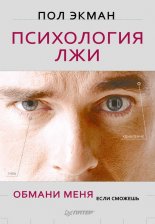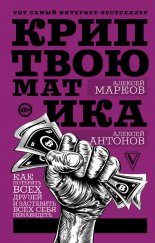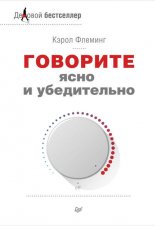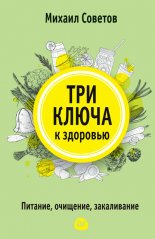0,05. Доказательная медицина от магии до поисков бессмертия Талантов Петр
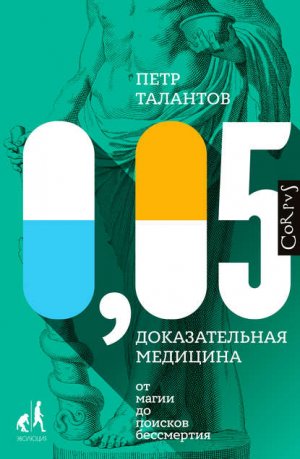
Sihvonen R., Paavola M., Malmivaara A., Itl A., Joukainen A., Nurmi H. et al. Arthroscopic partial meniscectomy versus sham surgery for a degenerative meniscal tear // The New England journal of Medicine. 2013. Vol. 369. P. 2515–2524.
Van der Windt D. A., Van der Heijden G., Van den Berg S. G., Ter Riet G. Ultrasound therapy for acute ankle sprains // Cochrane Database of Systematic Reviews. 2002. 2: CD001250.
Donaldson I. (trans, ed.) The reports of the royal commision of 1784 on Mesmer’s system of animal magnetism, and other contemporary documents. Edinburgh: James Lind Library/Sibbald Library, 2014.
Darnton R. Mesmerism and the end of the Enlightenment in France. Harvard University Press, 2009.
Braid J. Magic, witchcraft, animal magnetism. London, 1852.
Braid J. The complete writings of James Braid. Lulu.com, 2013.
Kaptchuk T. J., Shaw J., Kerr C. E., Conboy L. A., Kelley J. M., Thomas J. et al. “Maybe I made up the whole thing”: placebos and patients’ experiences in a randomized controlled trial // Culture, medicine and psychiatry. 2009. September. Vol. 33. № 3. P. 382–411.
Kienle G. S., Kiene H. The powerful placebo effect: fact or fiction? // Journal of Clinical Epidemiology. 1997. Vol. 50. № 12. P. 1311–1318.
Brown-Sequard C. E. The effects produced on man by subcutaneous injections of a liquid obtained from the testicules of animals // Lancet. 1889. July 20. Vol. 2. P. 105–107.
Cussons A. J., Bhagat C. I., Fletcher S. J., Walsh J. P. Brown-Squard revisited: a lesson from history on the placebo effect of androgen treatment // The Medical Journal of Australia. 2002. December. Vol. 177. № 11. P. 678–679.
Matfin G. The rejuvenation of testosterone: philosopher’s stone or Brown-Squard Elixir? // Therapeutic advances in endocrinology and metabolism. 2010. August. Vol. 1. № 4. P. 151–154.
Conway A. J., Handelsman D. J., Lording D. W., Stuckey B., Zajac J. D. Use, misuse and abuse of androgens. The Endocrine Society of Australia conensus guidelines for androgen prescribing // The Medical Journal of Australia. 2000. March 6. Vol. 172. № 5. P. 220–224.
Clark W. C., Mehl L. Thermal pain: A sensory decision theory analysis of the effect of age and sex on d’ various response criteria, and 50% pain threshold // Journal of Abnormal Psychology. 1971. Vol. 78. № 2. P. 202–212.
Lewis S. C., Warlow C. P. How to spot bias and other potential problems in randomised controlled trials // Journal of Neurology, Neurosurgery & Psychiatry. Vol. 75. № 2. P. 181–187.
Hofer A., Hummer M., Huber R., Kurz M., Walch T., Fleischhacker W. W. Selection bias in clinical trials with antipsychotics // Journal of Clinical Psychopharmacology. 2000. December. Vol. 20. № 6. P. 699–702.
Hodges R. D., Scofield A. M. Is spiritual healing a valid and effective therapy? // Journal of the Royal Society of Medicine. 1995. Vol. 88. № 4. P. 203–207.
Abbot N. C., Harkness E. F., Stevinson C., Marshall F. P., Conn D. A., Ernst E. Spiritual healing as a therapy for chronic pain: a randomized, clinical trial // Pain. 2001. Vol. 91. № 1–2. P. 79–89.
Miller L. E., Stewart M. E. The blind leading the blind: Use and misuse of blinding in randomized controlled trials // Contemporary Clinical Trials. 2011. Vol. 32. № 2. P. 240–243.
Misra S. Randomized double blind placebo control studies, the “Gold Standard” in intervention based studies // Indian journal of sexually transmitted diseases and AIDS. 2012. July-December. Vol. 33. № 2. P. 131–134.
Jadad A. R., Enkin M. W. Randomized controlled trials: questions, answers, and musings. Blackwell Publishing, 2007.
George S. L. Perspectives on scientific misconduct and fraud in clinical trials // Chance. 1997. Vol. 10. № 4. P. 3–5.
Schulz K. F., Chalmers I., Hayes R. J., Altman D. G. Empirical evidence of bias: dimensions of methodological quality associated with estimates of treatment effects in controlled trials // JAMA. 1995. Vol. 273. № 5. P. 408–412.
Steneck N. H. Assessing the Integrity of Publicly Funded Research. A Background Report for the ORI Research Conference on Research Integrity. 2000.
George S. L., Buyse M. Data fraud in clinical trials // Clinical investigation. 2015. Vol. 5. № 2. P. 161–173.
Woodhead M. 80% of China’s clinical trial data are fraudulent, investigation finds // BMJ. 2016. Vol. 355: i5396.
Djulbegovic B., Lacevic M., Cantor A., Fields K. K., Bennett C. L., Adams J. R. et al. The uncertainty principle and industry-sponsored research // Lancet. 2000. August 19. Vol. 356. P. 635–638.
Lexchin J., Bero L. A., Djulbegovic B., Clark O. Pharmaceutical industry sponsorship and research outcome and quality: systematic review // BMJ. 2003. Vol. 326. P. 1167–1170.
Davidson R. A. Source of funding and outcome of clinical trials // Journal of General Internal Medicine. 1986. May. Vol. 1. № 3. P. 155–158.
Medical Research Council. Clinical trial of patulin in the common cold // Lancet. 1944. September 16. Vol. 244. № 6316. P. 373–375.
Carneiro A. V. Bias in clinical studies // Revista portuguesa de cardiologia. 2011. February. Vol. 30. № 2. P. 235–242.
Raistrick H., Birkinshaw J. H., Michael S. E., Bracken A., Gye W. E. et al. Patulin in the common cold. Collaborative research on a derivative of Penicillium patulum Bainier // Lancet. 1943. November 20. Vol. 245. P. 625–635.
Stansfeld J. M., Francis A. E., Stuart-Harris C. H. Laboratory and clinical trials of patulin // Lancet. 1944. September 16. P. 370–372.
Clarke M. The 1944 patulin trial of the British Medical Research Council // Journal of the Royal Society of Medicine. 2006. September. Vol. 99. № 9. P. 478–480.
D’Arcy Hart P. A change in scientific approach: from alternation to randomised allocation in clinical trials in the 1940s // BMJ. 1999. August 28. Vol. 319. № 7209. P. 572–573.
Balabanova Y., Coker R., Fedorin I., Zakharova S., Plavinskij S., Krukov N. et al. Variability in interpretation of chest radiographs among Russian clinicians and implications for screening programmes: observational study // BMJ. 2005. August 13. Vol. 331. № 7513. P. 379–382.
Regev A., Berho M., Jeffers L. J., Milikowski C., Molina E. G. et al. Sampling error and intraobserver variation in liver biopsy in patients with chronic HCV infection // American Journal of Gastroenterology. 2002. Vol. 97. P. 2614–2618.
Cooperberg M. R., Chi T., Jad A., Cha I., Turek P. J. Variability in testis biopsy interpretation: implications for male infertility care in the era of intracytoplasmic sperm injection // Fertility and sterility. 2005. September. Vol. 84. № 3. P. 672–677.
Elmore J. G., Nelson H. D., Pepe M. S., Longton G. M. et al. Variability in pathologists’ iterpretations of individual breast biopsy slides: A population perspective // Annals of Internal Medicine. 2016. Vol. 164. № 10. P. 649–655.
Smith-Bindman R., Hosmer W. D., Caponigro M., Cunningham G. The variability in the interpretation of prenatal diagnostic ultrasound // Ultrasound in Obstetrics & Gynecology. 2001. April. Vol. 17. № 4. P. 326–332.
Mussurakis S., Buckley D. L., Coady A. M., Turnbull L. W., Horsman A. Observer variability in the interpretation of contrast enhanced MRI of the breast // The British journal of radiology. 1996. November. Vol. 69. № 827. P. 1009–1016.
Physical defects: The pathway to correction. New York: American Child Health Association 1934.
Ayanian J. Z., Berwick D. M. Do physicians have a bias toward action? A classic study revisited // Medical Decision Making. 1991. Vol. 11. № 3. P. 154–158.
Boylston Z. An account of the small-pox inoculated in New England, upon all sorts of persons, whites, blacks and of all ages and constitutions. The Second edition. London: Printed for S. Chandler. Reprinted in Boston in NE for S. Gerrism in Cornhil and T. Hancock, 1730.
Torgerson D. J., Roberts C. Randomisation methods: concealment // BMJ. 1999. August 7. Vol. 319. № 7206. P. 375–376.
Schulz K. F. Subverting randomization in controlled trials // JAMA. 1995. November 8. Vol. 274. № 18. P. 1456–1458.
Julious S. A., Mullee M. A. Confounding and Simpson’s paradox // BMJ. 1994. December. Vol. 309. № 6967. P. 1480–1481.
Charig C. R., Webb D. R., Payne S. R., Wickham J. E. Comparison of treatment of renal calculi by open surgery, percutaneous nephrolithotomy, and extracorporeal shockwave lithotripsy // British Medical Journal. (Clinical research ed.). 1986. March 29. Vol. 292. № 6524. P. 879–882.
Kunz R., Vist G., Oxman A. D. Randomisation to protect against selection bias in healthcare trials // The Cochrane database of systematic reviews. 2007. April. Vol. 18. № 2, MR000012.
Antman K., Amato D., Wood W., Carson J., Suit H., Proppe K. et al. Selection bias in clinical trials // Journal of Clinical Oncology. 1985. August. Vol. 3. № 8. P. 1142–1147.
Vickers A. J. How to randomize // Journal of the Society for Integrative Oncology. 2006. Vol. 4. № 4. P. 194–198.
Suresh K. P. An overview of randomization techniques: An unbiased assessment of outcome in clinical research // Journal of human reproductive sciences. 2011. January-April. Vol. 4. № 1. P. 8–11.
Beller E. M., Gebski V., Keech A. C. Randomisation in clinical trials // Medical Journal of Australia. 2002. Vol. 177. № 10. P. 565–567.
Porter T. M. The Rise of Statistical Thinking, 1820–1900. Princeton University Press, 1986.
Fisher R. A. The arrangement of field experiments // Journal of the Ministry of Agriculture of Great Britain. 1926. Vol. 33. P. 503–513.
Nolan D., Speed T. Stat Labs: Mathematical statistics through applications. Springer-Verlag, New York, 2000.
Fisher R. A. Mathematics of a lady tasting tea / J. R. Newman (ed.), The world of mathematics (Third Ed., 1512–1521). New York: Simon and Schuster, 1956. P. 1512–1521.
Finney D. J. Sir Ronald Fisher’s Contributions to Biometric Statistics // Biometrics. 1964. Vol. 20. № 2. P. 322–329.
Fisher R. A. The design of experiments. Edinburgh: Oliver and Boyd, 1960.
Hrbjartsson A., Gtzsche P. C., Gluud C. The controlled clinical trial turns 100 years: fibiger’s trial of serum treatment of diphtheria // BMJ. 1998. Vol. 317. № 7167. P. 1243–1245.
Hall N. S. R. A. Fisher and his advocacy of randomization // Journal of the history of biology. 2007. Summer. Vol. 40. № 2. P. 295–325.
Kennedy A., Torgerson D. J., Campbell M. K., Grant A. M. Subversion of allocation concealment in a randomised controlled trial: a historical case study // Trials. 2017. Vol. 18. P. 204.
Schulz K. F., Chalmers I., Grimes D. A., Altman D. G. Assessing the quality of randomization from reports of controlled trials published in obstetrics and gynecology journals // JAMA. 1994. Vol. 272. № 2. P. 125–128.
Kahan B. C., Morris T. P. Reporting and analysis of trials using stratified randomisation in leading medical journals: review and reanalysis // BMJ. 2012. Vol. 345: e5840.
Ah-See K. W., Molony N. C. A qualitative assessment of randomized controlled trials in otolaryngology // The Journal of Laryngology & Otology. 1998. Vol. 112. № 5. P. 460–463.
Britton A., McKee M., Black N., McPherson K., Sanderson C. et al. Choosing between randomised and non-randomised studies: a systematic review // Health Technology Assessment. 1998. October. Vol. 2. № 13.
Galton F. Statistical inquiries into the efficacy of prayer // Fortnightly Review. 1872. Vol. 12. P. 125–135.
Stigler S. M. Francis Galton’s account of the invention of correlation // Statistical Science. 1989. Vol. 4. № 2. P. 73–79.
Statistics at Square One (ninth edition, revised by M. J. Campbell, T. D. V. Swinscow). BMJ Publ. Group, London, 1996.
Stanton J. M. Galton, Pearson, and the peas: A brief history of linear regression for statistics instructors // Journal of Statistics Education. 2001. Vol. 9. № 3.
Lyon A. Why are Normal Distributions Normal? // British Journal for the Philosophy of Science. 2014. Vol. 65. № 3. P. 621–649.
Forbes E. G. Gausse and the discovery of ceres // JHA. 1971. Vol. 2. P. 195–199.
Sheynin O. B. Laplace’s theory of errors // Archive for History of Exact Sciences. 1977. May. Vol. 17. № 1. P. 1–61.
Часть третья
Franco N. H. Animal experiments in biomedical research: A historical perspective // Animals. 2013. Vol. 3. № 1. P. 238–273.
Guerrini A. Experimenting with humans and animals. From Galen to animal rights. Johns Hopkins University Press, 2003.
Perel P., Roberts I., Sena E., Wheble P., Briscoe C., Sandercock P., Macleod M. et al. Comparison of treatment effects between animal experiments and clinical trials: systematic review // BMJ. 2007. January 27. Vol. 334. № 7586. P. 197–200.
An account of the experiment of transfusion, practised upon a man in London // Philosophical Transactions. 1667. Vol. 30. № 2. P. 557–559.
Dorrington K. L., Poole W. The first intravenous anaesthetic: how well was it managed and its potential realized? // British Journal of Anaesthesia. 2013. January. Vol. 110. № 1. P. 7–12.
Lamba N., Holsgrove D., Broekman M. L. The history of head transplantation: a review // Acta Neurochirurgica. 2016. Vol. 158. № 12. P. 2239–2247.
The ethics of research involving animals. London: Nuffield Council on Bioethics, 2005.
Maehle A.-H., Trhler U. Animal experimentation from antiquity to the end of the eighteenth century: Attitudes and arguments / Rupke N. A. (ed.) Vivisection in Historical Perspective. London: Croom Helm, 1987.
Prejean J. D., Peckham J. C., Casey A. E., Griswold D. P., Weisburger E. K., Weisburger J. H. Spontaneous Tumors in Sprague-Dawley Rats and Swiss Mice // Cancer research. 1973. November. Vol. 33. № 11. P. 2768–2773.
Liddick D. R. Eco-terrorism: radical environmental and animal liberation movements. New York: Praeger, 2006.
Scutti S. Animal testing: A long, unpretty history // Medical Daily. 2013. June 27.
Ormandy E. H., Schuppli C. A., Weary D. M. Worldwide trends in the use of animals in research: The contribution of genetically-modified animal models // Alternatives to laboratory animals. 2009. Vol. 37. № 1. P. 63–68.
Weisse A. B. Self-experimentation and its role in medical research // Texas Heart Institute journal. 2012. Vol. 39. № 1. P. 51–54.
Altman L. K. Who goes first?: The story of self-experimentation in medicine. University of California Press, 1998.
Gladstein J. Hunter’s chancre: did the surgeon give himself syphilis? // Clinical Infectious Diseases. 2005. Vol. 41. P. 128–129.
Reed W., Carroll J., Agramonte A., Lazear J. W. The etiology of yellow fever – a preliminary note // Public Health Papers and Reports. 1900. Vol. 26. P. 37–53.
Marshall B. J., Warren R. Unidentified curved bacilli on gastric epithelium in active chronic gastritis // Lancet. 1984. June 16. Vol. 323. № 8390. P. 1311–1315.
Hellstrm P. M. This year’s Nobel Prize to gastroenterology: Robin Warren and Barry Marshall awarded for their discovery of Helicobacter pylori as pathogen in the gastrointestinal tract // World journal of gastroenterology. 2006. May 21. Vol. 12. № 19. P. 3126.
Blackadar C. B. Historical review of the causes of cancer // World journal of clinical oncology. 2016. February 10. Vol. 7. № 1. P. 54–86.
Stubbins F. A treatise on malignant fever: with an attempt to prove its noncontagious nature. Philadelphia, 1804.
Buzzi A. Claude Bernard on cardiac catheterization // The American Journal of Cardiology. 1959. September. Vol. 4. № 3. P. 405–409.
Heiss H. W. Werner Forssmann: a German problem with the Nobel Prize // Clinical Cardiology. 1992. Vol. 15. № 7. P. 547–549.
Boring E. G. The sensations of the alimentary canal // The American Journal of Psychology. 1915. January. Vol. 26. № 1. P. 1–57.
Tarasova L. P. Experiments by I. I. Mechnikov on the study of cholera // Zhurnal mikrobiologii, epidemiologii, i immunobiologii. 1965. February. Vol. 42. P. 145–149.
Lakhtakia R., Burney I. Self-experimenting physicians: Mavericks or martyrs? // Sultan Qaboos University Medical Journal. 2015. November. Vol. 15. № 4, e452–455.
Long C. W. An account of the first use of sulphuric ether by inhalation as an anaesthetic in surgical operations // Survey of Anesthesiology. 1991. December. Vol. 35. № 6. P. 375.
Klockgether-Radke A. P. F. W. Sertrner and the discovery of morphine. 200 years of pain therapy with opioids // Anasthesiol Intensivmed Notfallmed Schmerzther. 2002. May. Vol. 37. № 5. P. 244–249.
Benzenhfer U., Passie T. Rediscovering MDMA (ecstasy): the role of the American chemist Alexander T. Shulgin // Addiction. Vol. 105. P. 1355–1361.
Zuardi A. W. History of cannabis as a medicine: a review // Brazilian Journal of Psychiatry. 2006. June. Vol. 28. № 2. P. 153–157.
Holmstedt B., Liljestrand G. (eds.) Readings in Pharmacology. New York: The Macmillan Company, 1963.
Swan M. Health 2050: The realization of personalized medicine through crowdsourcing, the quantified self, and the participatory biocitizen // Journal of Personalized Medicine. 2012. Vol. 2. № 3. P. 93–118.
Bode M., Krisensen D. B. The digital doppelgnger within. A study on self-tracking and the quantified self-movement / Canniford R., Bajde D. (eds.) Assembling consumption: researching actors, networks and markets. New York: Routledge, 2016. P. 119–134.
Lee V. R. What’s Happening in the “Quantified Self” Movement? Instructional Technology and Learning Sciences Faculty Publications. 2014. P. 1032–1036.
Bjelakovic G., Nikolova D., Gluud L. L., Simonetti R. G., Gluud C. Antioxidant supplements for prevention of mortality in healthy participants and patients with various diseases // Cochrane Database of Systematic Reviews. 2008. № 3. Art. № CD007176.
Bkkon I. Recognition of functional roles of free radicals // Current neuropharmacology. 2012. December. Vol. 10. № 4. P. 287–288.
Knight J. A. Review: Free radicals, antioxidants, and the immune system // Annals o f Clinical & Laboratory Science. 2000. Vol. 30. № 2. P. 145–158.
Drge W. Free radicals in the physiological control of cell function // Physiological reviews. 2002. Vol. 82. P. 47–95.
Ossola A. These biohackers are creating open-source insulin // Popular Science. 2015. November 19.
Srader D. W. The Nuremberg doctors’ trial: framing collective memory through argument. The University of Georgia. 2003.
Hornblum A. M. They were cheap and available: prisoners as research subjects in twentieth century America // BMJ. 1997. November 29. Vol. 315. P. 1437–1441.
Rice, J. B. (reported) Interrogation of General Gerhard Rose: vice-president of the Robat Koch Institute, Berlin, chief consultant in tropical medicine to the German Air Force. [England?]: Combined Intelligence Objectives Sub-Committee, [not before June 1945].
Chernin E. Richard Pearson Strong and the Iatrogenic Plague Disaster in Bilibid Prison, Manila, 1906 // Reviews of Infectious Diseases. 1989. November-December. Vol. 11. № 6. P. 996–1004.
The Lbeck catastrophe // British Medical Journal. 1931. June 6. Vol. 1. P. 986.
Vollmann J., Winau R. Nuremberg doctors’ trial: informed consent in human experimentation before the Nuremberg code // BMJ. 1996. December 7. Vol. 313. № 7070. P. 1445–1447.
Langer E. Human experimentation: Cancer studies at Sloan-Kettering stir public debate on medical ethics // Science. 1964. February 7. Vol. 143. № 3606. P. 551–553.
Thomas S. B., Quinn S. C. The Tuskegee Syphilis Study, 1932 to 1972: implications for HIV education and AIDS risk education programs in the black community // American Journal of Public Health. 1991. November. Vol. 81. № 11. P. 1498–1505.
Brandt A. M. Racism and research: The case of the Tuskegee Syphilis study // The Hastings Center Report. 1978. Vol. 8. № 6. P. 21–29.
Corbie-Smith G. The continuing legacy of the Tuskegee Syphilis Study: Considerations for clinical investigation // The American Journal of the Medical Sciences. 1999. January. Vol. 317. № 1. P. 5–8.
Reverby S. M. More than fact and fiction: Cultural memory and the Tuskegee syphilis study // The Hastings Center Report. 2001. September-October. Vol. 31. № 5. P. 22–28.
Annas G. J. The changing landscape of human experimentation: Nuremberg, Helsinki and Beyond // Health Matrix: The Journal of Law-Medicine. 1992. Vol. 2. № 2. P. 119–140.
Seidelman W. E. Nuremberg lamentation: for the forgotten victims ofmedical science // BMJ. 1996. December 7. Vol. 313. № 7070. P. 1463–1467.
Trials of War Criminals before the Nuremberg Military Tribunals under Control Council Law No. 10. Washington, D. C.: U. S. Government Printing Office, 1949. Vol. 2. P. 181–182.
Public health // JAMA. 1896. June 6. Vol. XXVI. № 23. P. 1138–1140.
Report IV. Contemporary Issues in Medicine: Basic Science and Clinical Research. Medical School Objectives Project, 2001.
Millum J., Grady C. The ethics of placebo-controlled trials: methodological justifications // Contemporary clinical trials. 2013. November. Vol. 36. № 2. P. 510–514.
Challenging ethical issues in contemporary research on human beings. National Health and Medical Research Council (NHMRC). Canberra, ACT: Australian Government, 2007.
Hiltner S. The Tuskegee Syphilis Study under review // Christian century. 1973. November 28. Vol. 90. № 43. P. 1174–1176.
Howard-Jones N. Human experimentation in historical and ethical perspectives // Social Science & Medicine. 1982. Vol. 16. № 15. P. 1429–1448.
Bernstein J. E. Ethical considerations in human experimentation // Journal of clinical pharmacology. 1975. August- September. Vol. 15. № 8–9. P. 579–590.
Katz R. V. The legacy of the Tuskegee Syphilis Study: assessing its impact on willingness to participate in biomedical studies // Journal of health care for the poor and underserved. 2008. November. Vol. 19. № 4. P. 1168–1180.
Rasko J., Power C. Dr Con Man: the rise and fall of a celebrity scientist who fooled almost everyone // The Guardian. 2017. September 1.
The Macchiarini case: investigation of the synthetic trachea transplantations at Karolinska University Hospital. 2016. August 31.
Novella S. Selling Stem Cell Hype // Skeptical Inquirer. 2011. September/October. Vol. 35.5.
Shuster E. Fifty years later: The significance of the Nuremberg Code // The New England Journal of Medicine. 1997. November. Vol. 337. P. 1436–1440.
The Human Radiation Experiments: Final Report of the Advisory Committee on Human Radiation Experiments. Oxford University Press, 1996.
Киселев В. А. Биоэтический словарь. 2-е изд., испр. и доп. Екатеринбург: УГМА, 2006
Часть четвертая
Vineis P. History of bias // Sozial-und Prventivmedizin. 2002. September. Vol. 47. № 3. P. 156–161.
Buck C., Llopis A. et al. The challenge of epidemiology: issues and selected readings. Pan American Health Org, 1988.
Karamanou M., Panayiotakopoulos G., Tsoucalas G., Kousoulis A., Androutsos G. From miasmas to germs: a historical approach to theories of infectious disease transmission // Le Infezioni in Medicina. 2012. March. Vol. 20. № 1. P. 58–62.
Sterner C. S. Brief history of miasmic theory // Bulletin of the History of Medicine. 1948. Vol. 22.
Юркова З. В. Сенная площадь. Вчера, сегодня, завтра. М.: Центрполиграф, 2011.
Bosin Y. V. Russia, cholera riots of 1830–1831 / Ness I. ed. International Encyclopedia of Revolution and Protest. Blackwell Publishing, 2009. P. 2877–2878.
McGrew R. E. The first Russian cholera epidemic: themes and opportunities // Bulletin of the History of Medicine. 1962. January 1. Vol. 36. P. 220.
Snow J. The cholera at Albion terrace // London Medical Gazette. 1849. September. Vol. 44. P. 504–505.
Hill A. B. Snow – An Appreciation // Proceedings of the Royal Society of Medicine. 1955. Vol. 48. P. 1008–1012.
Parkes E. A. Mode of Communication of Cholera. By John Snow, MD: Second Edition – London, 1855, pp 162 // International Journal of Epidemiology. 2013. Vol. 42. № 6. P. 1543–1552.
Snow J. On the mode of communication of cholera. John Churchill, 1855.
Budd W. Malignant Cholera: its cause, mode of propagation, and prevention // International Journal of Epidemiology. 2013. Vol. 42. № 6. P. 1567–1575.
Smith G. D. Commentary: Behind the Broad Street pump: aetiology, epidemiology and prevention of cholera in mid-19th century Britain // International Journal of Epidemiology. 2002. October. Vol. 31. № 5. P. 920–932.
Ackerknecht E. H. Anticontagionism between 1821 and 1867: The Fielding H. Garrison Lecture // International Journal of Epiemiology. 2009. February. Vol. 38. № 1. P. 7–21.
Koch R. An address on cholera and its bacillus // British Medical Journal. 1884. September. Vol. 2. № 1236. P. 453–459.
Howard-Jones N. Robert Koch and the cholera vibrio: a centenary // British medical journal (Clinical research ed.). 1984. February 4. Vol. 288. № 6414. P. 379–381.
Blevins S. M., Bronze M. S. Robert Koch and the ‘golden age’ of bacteriology // International Journal of Infectious Diseases. 2010. September. Vol. 14. № 9, e744–751.
Barua D. The global epidemiology of cholera in recent years // Proceedings of the Royal Society of Medicine. 1972. May. Vol. 65. № 5. P. 423–428.
Cholera vaccines: WHO position paper // Weekly Epidemiological Record. 2010. Vol. 85. № 13. P.117–128.
Rothman K. J., Greenland S. Types of Epidemiologic Studies / Rothman K. J., Greenland S. Modern Epidemiology. 2nd ed. Philadelphia: Lippincott Williams & Wilkins, 1998. P. 67–78.
Vandenbroucke J. P., Pearce N. Case – control studies: basic concepts // International Journal of Epidemiology. 2012. Vol. 41. № 5. P. 1480–1489.
Rubin D. B. Estimating causal effects of treatments in randomized and nonrandomized studies // Journal of Educational Psychology. 1974. Vol. 66. № 5. P. 688–701.
Parascandola M. Two approaches to etiology: the debate over smoking and lung cancer in the 1950s // Endeavour. 2004. June. Vol. 28. № 2. P. 81–86.
White C. Research on smoking and lung cancer: A landmark in the history of chronic disease epidemiology // The Yale Journal of Biology and Medicine. 1990. Vol. 63. № 1. P. 29–46.
Mahmood S. S., Levy D., Vasan R. S., Wang T. J. The framingham heart study and the epidemiology of cardiovascular diseases: A historical perspective // Lancet. 2014. March 15. Vol. 383. № 9921. P. 999–1008.
Song J. W., Chung K. C. Observational studies: Cohort and case-control studies // Plastic and reconstructive surgery. 2010. December. Vol. 126. № 6. P. 2234–2242.
Ending the tobacco problem: A blueprint for the nation. Washington, DC: Institute of Medicine, 2007.
Ridge C. A., McErlean A. M., Ginsberg M. S. Epidemiology of Lung Cancer // Seminars in interventional radiology. 2013. June. Vol. 30. № 2. P. 93–98.
Talhout R., Schulz T., Florek E., Van Benthem J., Wester P., Opperhuizen A. Hazardous compounds in tobacco smoke // International journal of environmental research and public health. 2011. February. Vol. 8. № 2. P. 613–628.
Pfeifer G. P, Denissenko M. F., Olivier M., Tretyakova N., Hecht S. S., Hainaut P. Tobacco smoke carcinogens, DNA damage and p53 mutations in smoking-associated cancers // Oncogene. 2002. October. Vol. 21. P. 7435–7451.
Hecht S. S. Tobacco smoke carcinogens and lung cancer // Journal of the National Cancer Institute. 1999. July 21. Vol. 91. № 14. P. 1194–1210.
Hecht S. S. Carcinogenicity studies of inhaled cigarette smoke in laboratory animals: old and new // Carcinogenesis. 2005. Vol. 26. № 9. P. 1488–1492.
Tobacco smoke and involuntary smoking / IARC monographs on the evaluation of carcinogenic risks to humans. Vol. 83. International Agency for Research on Cancer, Lyon, 2004.
Glantz S. A., Bero L. A., Slade J., Barnes D. E., Hanauer P. (eds.). The Cigarette Papers. University of California Press, 1998.
Fisher R. Cigarettes, cancer, and statistics // The Centennial Review of Arts & Science. 1958. Vol. 2. P. 151–166.
Heath C. W. Differences between smokers and nonsmokers // Archives of Internal Medicine. 1958. February. Vol. 101. № 2. P. 377–388.
Morris J. N., Crawford M. D. Coronary heart disease and physical activity of work: Evidence of a national necropsy survey // British Medical Journal. 1958. December 20. Vol. 2. № 5111. P. 1485–1496.
Morris J. N., Clayton D. G., Everitt M. G., Semmence A. M., Burgess E. H. Exercise in leisure time: coronary attack and death rates // British heart journal. 1990. Vol. 63. № 3. P. 325–334.
Fedak K. M., Bernal,A., Capshaw Z. A., Gross S. Applying the Bradford Hill criteria in the 21st century: how data integration has changed causal inference in molecular epidemiology // Emerging themes in epidemiology. 2015. Vol. 12. № 1. P. 14.
Howick J., Glasziou P., Aronson J. K. The evolution of evidence hierarchies: what can Bradford Hill’s ‘guidelines for causation’ contribute? // Journal of the Royal Society of Medicine. 2009. Vol. 102. № 5. P. 186–194.
Di Cicco M. E., Ragazzo V., Jacinto T. Mortality in relation to smoking: the British Doctors Study // Breathe (Sheffield, England). 2016. September. Vol. 12. № 3. P. 275–276.
Dearlove J. V., Bialous S. A., Glantz S. A. Tobacco industry manipulation of the hospitality industry to maintain smoking in public places // Tobacco Control. 2002. Vol. 11. № 2. P. 94–104.
Smith C. N., Kraemer J. D., Johnson A. C., Mays D. Plain packaging of cigarettes: do we have sufficient evidence? // Risk management and healthcare policy. 2015. Vol. 8. P. 21–30.
Ong E. K., Glantz S. A. Constructing “sound science” and “good epidemiology”: Tobacco, lawyers, and public relations firms // American journal of public health. 2001. November. Vol. 91. № 11. P. 1749–1757.
Bero L. A. Tobacco industry manipulation of research // Public Health Reports. 2005. March/April. Vol. 120. № 2. P. 200–208.
Velicer C., Helen G., Glantz S. A. Tobacco papers and tobacco industry ties in regulatory toxicology and pharmacology // Journal of public health policy. 2018. February. Vol. 39. № 1. P. 34–48.
Boffetta P., Couto E., Wichmann J., Ferrari P., Trichopoulos D. et al. Fruit and vegetable intake and overall cancer risk in the European Prospective Investigation into Cancer and Nutrition (EPIC) // Journal of the National Cancer Institute. 2010. April 21. Vol. 102. № 8. P. 529–537.
Siontis G. C. M., Ioannidis J. P. A. Risk factors and interventions with statistically significant tiny effects // International Journal of Epidemiology. 2011. October. Vol. 40. № 5. P. 1292–1307.
De Boer M., Van Leeuwen F. E., Hauptmann M., Overbeek L. et al Breast implants and the risk of anaplastic large-cell lymphoma in the breast // JAMA Oncology. 2018. Vol. 4. № 3. P. 335–341.
Doren E. L., Miranda R. N., Selber J. C., Garvey P. B., Liu J., Medeiros L. J. et al. U. S. epidemiology of breast implant-associated anaplastic large cell lymphoma // Plastic and reconstructive surgery. 2017. May. Vol. 139. № 5. P. 1042–1050.
Bouvard V., Loomis D., Guyton K. Z., Grosse Y., Ghissassi F. et al. Carcinogenicity of consumption of red and processed meat // Lancet Oncology. 2015. December. Vol. 16. P. 1599–1600.
Food, nutrition, physical activity, and the prevention of cancer: a global perspective. World Cancer Research Fund / American Institute for Cancer Research. Washington DC: AICR, 2007.
Chan D. S., Lau R., Aune D., Vieira R., Greenwood D. C., Kampman E., Norat T. Red and processed meat and colorectal cancer incidence: meta-analysis of prospective studies // PLoS One. 2011. Vol. 6. № 6, e20456.
Truswell A. S. Problems with red meat in the WCRF2 // American Journal of Clinical Nutrition. 2009. Vol. 89. № 4. P. 1274–1275.
Wei E. K., Giovannucci E., Wu K., Rosner B., Fuchs C. S., Willett W. C., Colditz G. A. Comparison of risk factors for colon and rectal cancer // International Journal of Cance. 2004. January 20. Vol. 108. № 3. P. 433–442.
Tai V., Grey A., Bolland M. J. Results of observational studies: analysis of findings from the Nurses’ Health Study // PLoS One. 2014. Vol. 9. № 10, e110403.
Часть пятая
Overington J. P., Al-Lazikani B., Hopkins A. L. How many drug targets are there? // Nature reviews. Drug discovery. 2006. December. Vol. 5. № 12. P. 993–996.
Kaplan R. M., Irvin V. L. Likelihood of null effects of large NHLBI clinical trials has increased over time // Plos Оne. 2015. August 5. Vol. 10. № 8, e0132382.
Chalmers I., Glasziou P. Avoidable waste in the production and reporting of research evidence // Lancet. 2009. Vol. 374. № 9683. P. 86–89.
